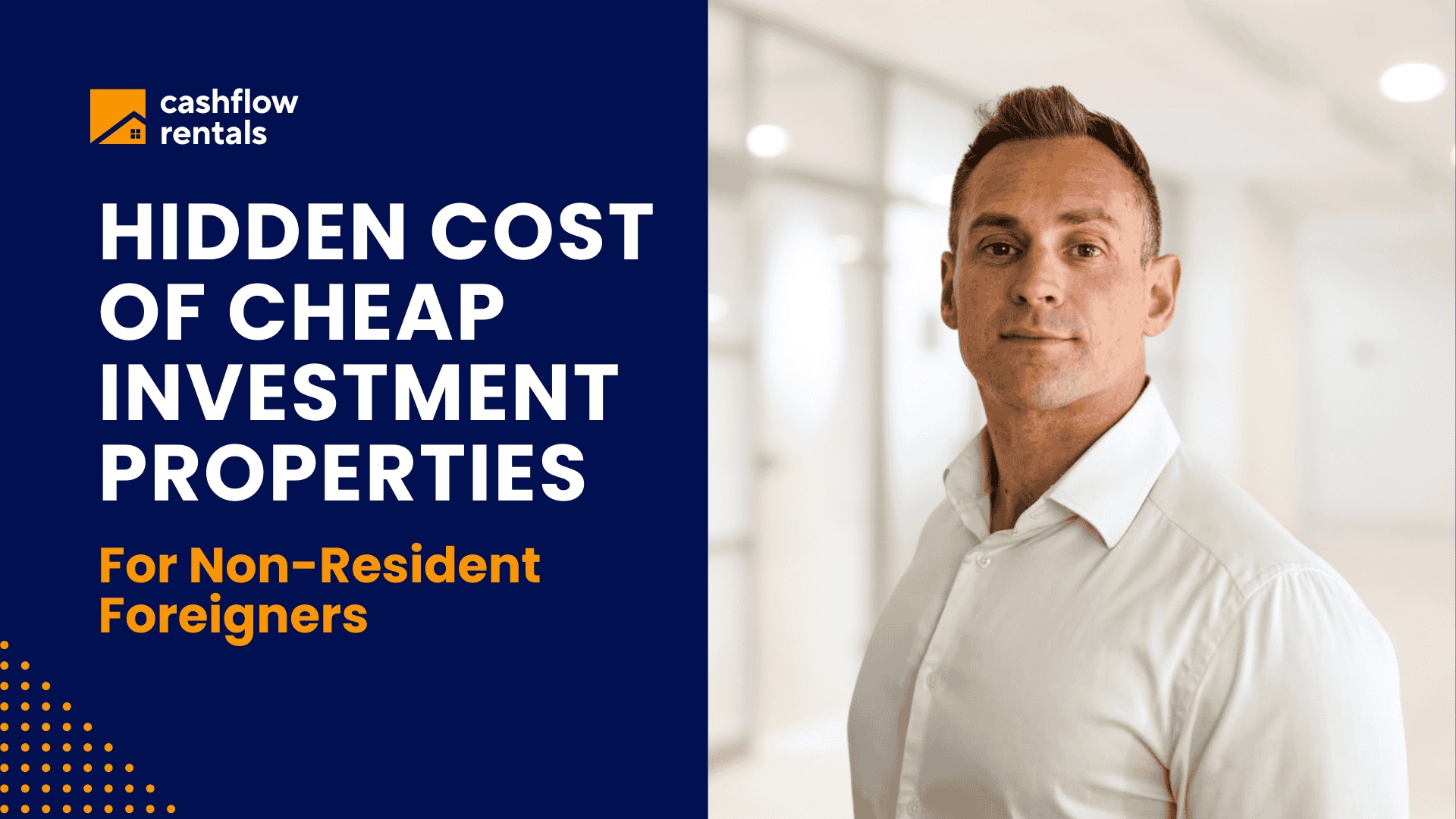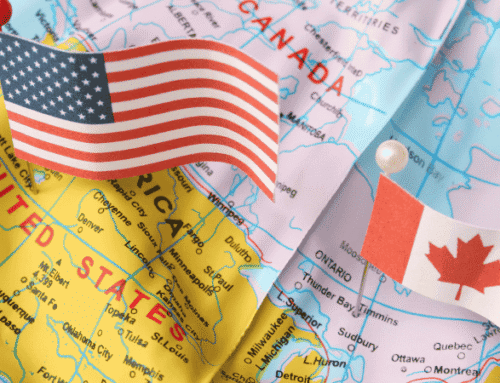The Hidden Costs Behind Bargain Flipped Properties in the USA
FREE DOWNLOAD: 10 Costly Mistakes Foreigners Make Buying U.S. Real Estate
Price, yield, and neighborhood. These three elements form the deceptive triangle that traps foreign investors in the U.S. real estate market.
After purchasing over 120 investment properties across the United States since 2016, I’ve learned this lesson repeatedly – sometimes the hard way.
The allure is undeniable. A seemingly nicley renovated property at $100,000 with impressive rental yields in an “up-and-coming” area. The listing photos showcase gleaming LVP flooring, fresh paint, and updated fixtures.
But what lies beneath that fresh coat of paint often costs out of state and foreign property investors tens of thousands (or more) in unexpected repairs.
Related: Local Market Expertise is Essential for Overseas Property Investors
The Anatomy of a “Too Good to Be True” Deal
Most bargain flipped properties marketed to foreign investors follow a predictable pattern. They’re typically low-value homes in rougher neighborhoods that have been landlord-owned for decades.
These properties have usually suffered from chronic undermaintenance as previous owners prioritized cash flow over capital improvements.
The math simply doesn’t work for the renovations taht are truly needed to create an asset rather than a liability. When a flipper buys a run-down house for $40,000, proper renovation requires another $50,000+ for new kitchen, bathroom, roof, furnace, HVAC, wiring, and plumbing.
After financing costs and selling expenses, the flipper has no margin when selling to an investor for $100,000.
Their solution? Cover fundamental issues with cosmetic improvements.
One study found that while the average gross flipping ROI was 29.6% in 2024 with average profits of $72,000, these figures don’t account for the hidden costs many buyers face after purchase. (https://www.fool.com/research/house-flipping-statistics/).
Related: Successful Foreign Investors Use Local Market Data to Identify Opportunities
My Costly Pennsylvania Lesson
One of my first properties in Pennsylvania came with an expensive education. I purchased from a local realtor who was also a contractor, who sold me on her team handling the renovation.
The house looked spectacular at first glance. Within weeks, reality emerged: serious plumbing issues, electrical problems, a failed sewer line, broken furnace, and eventually a roof replacement.
These repairs cost tens of thousands beyond my budget. The lesson was clear: building the right team and conducting thorough due diligence isn’t optional – it’s essential.
Related: Why Foreigners Are Buying Investment Properties in the Northeast Midwest and South
The Foreign Investor’s Due Diligence Framework
Remote investing creates unique vulnerabilities. When you can’t physically visit a property, you need a systematic approach to protect yourself.
For turnkey properties, independent inspections are non-negotiable. Provide home inspectors with the renovation scope of work so they can verify quality and completeness.
Always get specialized inspections for the most common failure points: sewer scope and roof inspection are absolute requirements.
Engage directly with inspectors and appraisers. Their informal, off-the-record comments often reveal concerns they won’t put in official reports.
Foreign investor looking for property investment in the USA face particular challenges with remote due diligence, including language barriers, unfamiliar regulations, and difficulty verifying property conditions – creating an environment where unscrupulous sellers can easily hide structural defects.
Related: How to Get a Foreign National Mortgage Without a Visa or SSN
Building Your Protection Team
Success in remote real estate investing depends entirely on your network of local experts. This includes realtors, property managers, attorneys, appraisers, home inspectors, contractors, and handymen.
Communication is my first filter. If someone takes a week to respond to a simple email, they probably won’t be there when real problems arise.
Respect professionals’ time and expertise. Pay fairly (and on time), even if through referrals or networking opportunities. Quality people don’t work for free.
It’s taken me nine years to build reliable local teams across multiple markets. Every service provider I work with now came through referral – a testament to relationship-building as the foundation of remote investing success.
Related: Population Trends Driving Foreign Investment In USA Property
The Real Numbers: A Case Study
In New Castle, Pennsylvania, I purchased a property for $35,000 and renovated it for a rent-to-own program. When the tenant prepared to close, multiple issues emerged that should have been identified during renovation: aging roof, old windows, and mechanical problems.
I ultimately provided a $20,000 discount at closing. While we still made some profit, it was nowhere near our projected returns.
My mistake? Working with an unknown contractor and failing to maintain proper oversight during renovation.
According to home inspectors, many flipped houses have the “bling factor” with bright, shiny kitchens and bathrooms to distract buyers, while hiding serious defects that will ultimately cost thousands to repair. (https://abihomeservices.com/home-inspection-finds-flipped-houses/)
Related: The Best USA Mortgages for Foreign Nationals in 2025
The Most Common Hidden Issues
Five critical systems are routinely masked in quick flips: roofing, plumbing, electrical, furnace/HVAC, and especially sewer lines.
Sewer line issues are particularly insidious for foreign investors. Cast iron pipes have a lifespan of only 25-35 years before developing cracks and channels, creating costly repair situations that are impossible to detect without specialized camera inspections.
Foundation problems trigger cascading failures throughout a home’s systems—shifting foundations crack plumbing lines, disrupt electrical systems causing fire hazards, and separate HVAC connections, dramatically increasing utility costs.
Related: Real Estate Closing Costs in the USA for Foreign Property Investors
The Sweet Spot for Foreign Investors
After years of experience, I’ve identified the optimal investment range for foreign investors: working-class suburbs near metropolitan job markets, with properties valued between $150,000-$250,000.
These areas are seeing population growth as inner-city gentrification displaces families, driving suburban expansion.
This price point provides developers enough margin to fund complete, high-quality renovations rather than the cosmetic patches typical of cheaper properties.
For most of my clients, I recommend buying turnkey properties where renovations are already completed. This allows us to verify work quality and hold sellers accountable for repairs before closing.
Properly renovated properties limit vacancies and capital expenditures, providing consistent cash flow. They also attract better tenants who stay longer—key ingredients for successful long-term investments.
Related: Cleveland’s Population Shift is Driving Real Estate Investing Opportunities
Protection Strategies for Remote Investors
Always negotiate warranties with sellers. We require up to 6-month guarantees for any items repaired or replaced during renovation.
Financing and insurance considerations also favor quality properties. It’s nearly impossible to finance fixer-uppers with foreign national mortgages like long-term DSCR loans due to price and condition concerns.
Insurance costs rise significantly for vacant or under-construction properties. Conversely, well-renovated, tenant-occupied homes qualify for accessible financing and affordable insurance.
The pursuit of bargain properties often blinds investors to exponential hidden costs. By focusing on quality properties in the right neighborhoods, building strong local teams, and implementing rigorous due diligence, foreign investors can achieve sustainable returns without the catastrophic surprises that derail investment performance.
FREE DOWNLOAD: 10 Costly Mistakes Foreigners Make Buying U.S. Real Estate







![USA Property Investment for Foreign Buyers [2025 Guide]](https://cashflowrentals.net/wp-content/uploads/2025/07/USA-Property-Investment-for-Foreigners-Expert-2025-Guide-500x383.png)



